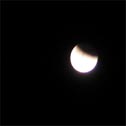|
1.00 Unit
Wt: 1.05 PD/WK 07
Regents Exam
Required
Offered in
Grades 9,10, 11, 12
Prerequisite: Math A and/or Concurrent
enrollment in Math A
Course Description:
Earth Science
is an academic course that explores the work
of nature on the earth. This course
utilizes mathematical concepts to illustrate
physical phenomena. The areas studied
include: geology, plate tectonics, earth's
geological history, limnology, oceanography,
meteorology, and astronomy. Short-term
student projects are an integral aspect of
the course. Laboratory work is required,
and students must meet the state standard
for laboratory work* in order to take the
regents examination.
* 30 written
laboratory hours
NYS
Earth Science Syllabus
| |
Earth Science
Trivia
|

click above
to learn all about them

hurricane Katrina
|
Hurricanes
Hurricane
Katrina was the costliest and one of
the deadliest
hurricanes in the history of the
United States. It was the
sixth-strongest Atlantic hurricane
ever recorded and the
third-strongest land falling U.S.
hurricane ever recorded.
Hurricane Katrina attained Category
5 status on the morning
of August 28 and reaching its peak
strength at 1:00 p.m.
CDT that day, with maximum sustained
winds of 175 mph.
A hurricane is a severe tropical
storm that forms in the
North Atlantic Ocean, the Northeast
Pacific Ocean east of
the dateline, or the South Pacific
Ocean east of 160E.
***
Hurricanes rotate in a
counter-clockwise direction
around an "eye."
***
A tropical storm becomes a hurricane
when winds reach
74 mph.
Hurricanes are classified into five
categories,
based on their wind speeds and
potential to cause damage.
***
* Category One -- Winds 74-95 miles
per hour
* Category Two --
Winds 96-110 miles per hour
* Category Three
-- Winds 111-130 miles per hour
* Category Four
-- Winds 131-155 miles per hour
* Category Five
-- Winds greater than 155 miles per
hour
***
|
|
|
Without
using precision instruments,
Eratosthenes measured the radius of
Earth in the third century B.C., and
came within 1 percent of the value
determined by today's technology.
Geyser
is derived from an Icelandic word
for "hot springs."
|
|
Lunar
eclipse 11/8/03 (Thank you, John
Costa)
 |
The
Arctic Ocean is is the smallest and
shallowest ocean.
According to National Geographic,
Mt. Everest grows about 4
millimeters a year: the two tectonic
plates of Asia and India, which collided millions of
years ago to form the Himalayas,
continue to press against each
other, causing the Himalyan peaks to grow slightly
each year.
The
highly rarefied region above the
chromosphere, called the corona, extends millions of
kilometers into space but is visible only during a total solar
eclipse (left). Temperatures in the corona are over
1,000,000 K.
The
surface of the Sun, called the
photosphere, is at a temperature of about 5800 K.
Sunspots are "cool" regions, only 3800 K (they look dark only by
comparison with the surrounding regions).
Talk
about old...
The Sun is about 4.5 billion years
old. Since its birth it has used up about half of the hydrogen in its core. It will continue to radiate
"peacefully" for another 5
billion years or so (although its
luminosity will approximately double in that time). But
eventually it will run out of hydrogen fuel. It will then
be forced into radical
changes which, though commonplace by
stellar standards, will result
in the total destruction of the
Earth.
(Courtesy of Nine Planets)
The
record for underground living goes
to a species of
chemolithotrophic bacteria, found in
basalt deposits 4,700
feet underground in solid volcanic
rock. Scientists in
search of oil discovered it while
analyzing drill core
samples.
|
|
|
Home |
|